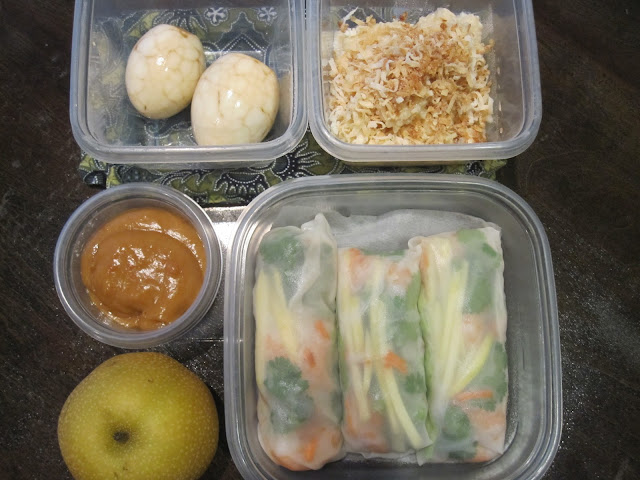Lunch packing gear, that is! I thought I would take a moment today to answer some questions about what I use to pack our lunches. Keep in mind that these are items that work for our needs -- something else might be more effective for you!
In selecting my lunch-packing 'tools,' my main goal is to maximize the chance of the lunch still looking edible at noon. Even a fresh, healthy meal is unappealing if everything is squished, bruised and soggy. Warning: This is a rather long blog entry, but hopefully worth your while to read.
The Box.
Most lunch containers make me cringe. Even with the chic patterns and styles available these days, I can't help but picture the potential mess. This style is my favorite:
Oh, I know. OMG, it's huge. That's so not cool. Hmmmm, funny thing...when given a choice between smashed sandwiches in a cute bag or awesome lunches in this lunchbox, my kids have opted for the uncool box. And, their classmates are jealous. :)
I love this box because it accommodates a variety of plastic containers and -- best of all -- it has a removable hard plastic liner. This means that when gooey stuff spills, we can take the liner out and thoroughly wash and dry it. The soft insulation layer never gets smelly or has icky food residue stuck in the seams.
You may have to look for this type of lunch container in the sporting goods section, because it is often called a 6-pack cooler. I bought this one at Target, but I have not seen them there recently. Walmart currently has two similar options:

.
The Containers.
I pack everything I can in reusable, plastic containers -- even chips, crackers and fruit. Why? Because they keep things from getting crushed and bruised. Keep in mind that lunchbox food isn't like a meal served on a plate. Kids and their belongings get bumped and jostled along their way to the classroom. Keep things separated and upright as much as possible.
I'm not picky about the brand of containers, but I do keep a variety of sizes and shapes on hand. Little containers are wonderful for keeping crispy or juicy ingredients separate, such as croutons, salad dressings or dips.
When needed, I use paper towels and wax paper, cut to fit inside the containers. Dry paper towels help keep fruits and veggies fresh by keeping excess moisture away. Damp paper towels keep moist foods, such as fresh spring rolls, from drying out. Wax paper separates layers of sticky baked goods and ingredients that might get a bit soggy if put together.
The Ice.
Another must is reusable 'blue ice.' I keep several of these in our freezer, and pack more than one when there is room and/or a lunch item really needs to stay cold for safety purposes. This is one of the major reasons I do not use a bento-box-style container. There isn't room for ice to keep food cold.
When packing the lunchbox, I place the blue ice as close as possible to the food items that are most perishable. In the case below, I put the ice next to the chicken salad.
When there is extra room left in the lunchbox and food needs to stay extra cold, I also add a bottle of ice water (mostly ice).
The Heat.
Conversely, some items are better served warm so I use an insulated container (Thermos). It helps to pre-heat your Thermos by filling it with boiling water for a few minutes just before you use it. Also, when possible, fill the container up. Pockets of air do not retain heat well. Along those same lines, liquids stay hotter longer than solids like pasta or meat.
Many insulated containers lose most of their heat from bottom. Feel around for your container's 'hot spot.' Keep the warmer areas as far as possible from items you want to keep cold. You can also wrap a napkin or paper towel around the warmer area to help manage the temperature differences.
The Details.
Yes, I actually do pack cloth napkins and real flatware in my kids' lunchboxes. Why not? It is less expensive and makes for a much nicer dining experience than the paper and plastic equivalents. Of course, I am conscious about not sending any sort of knife (even a butter knife) to school.
Lastly, a little hand-sanitizer can be a good thing. While regular hand-washing is preferable, it's nice to have a quick alternative in a pinch.

















































